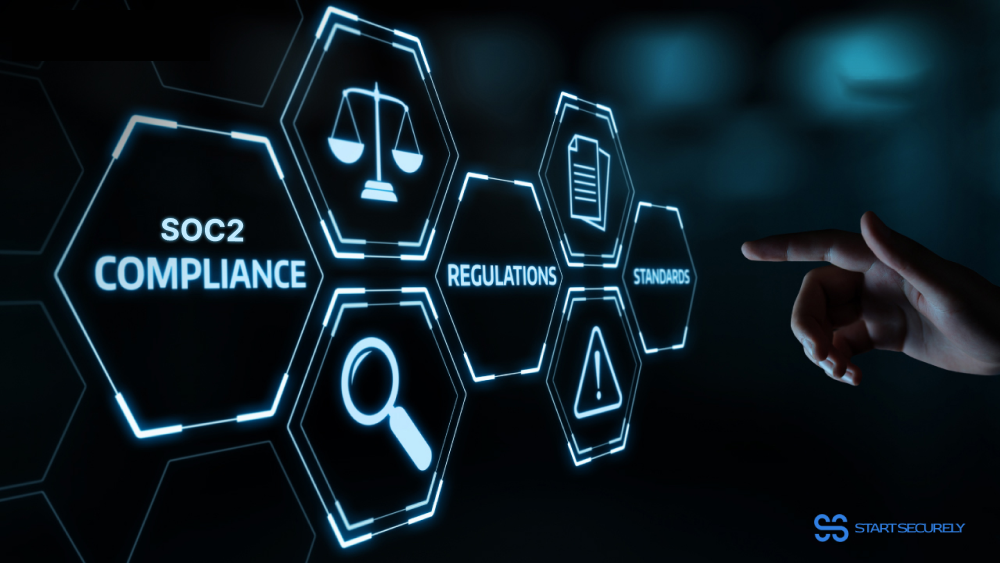Navigating the landscape of compliance can be daunting for any growing business. As you scale, maintaining the trust of your customers becomes paramount, and that’s where SOC 2 compliance steps in. This guide will walk you through the essentials of SOC 2, its importance, and how to streamline the compliance process, particularly with the power of automation.
Understanding SOC 2 Compliance
SOC 2, or System and Organization Controls 2, is a framework designed by the American Institute of CPAs (AICPA). It sets standards for managing customer data based on five “trust service criteria”: security, availability, processing integrity, confidentiality, and privacy.
For growing businesses, SOC 2 compliance is more than a checkbox exercise; it’s a demonstration of your commitment to safeguarding your customers’ data. It reassures your clients that their information is handled with the utmost care and security.
Why SOC 2 Matters for Growing Businesses
- Building Trust and Credibility: In today’s digital world, trust is a currency. Achieving SOC 2 compliance signals to potential clients that you prioritize data security, which can significantly boost your credibility.
- Competitive Edge: Many enterprises now mandate SOC 2 compliance from their vendors. Being compliant can open doors to new business opportunities and partnerships.
- Risk Mitigation: Implementing SOC 2 controls helps identify and mitigate risks associated with data handling, which is crucial as your business scales.
- Regulatory Alignment: While SOC 2 is voluntary, its principles align well with other regulatory requirements, providing a solid foundation for overall compliance strategy.
Key Steps to Achieve SOC 2 Compliance
- Define Scope and Objectives: Start by determining which trust service criteria are relevant to your business. For instance, if your company processes a large volume of customer data, security and confidentiality might be your primary focus.
- Gap Analysis: Conduct a thorough assessment of your current controls and identify gaps. This will help you understand where you need to strengthen your processes.
- Implement Controls: Based on your gap analysis, implement the necessary controls. This might include encryption, access controls, and regular security training for your staff.
- Documentation: SOC 2 is heavily reliant on documentation. Ensure that all your policies, procedures, and controls are well-documented and accessible.
- Continuous Monitoring: SOC 2 compliance isn’t a one-time event. Continuous monitoring and regular audits are essential to maintain compliance.
- Engage an Auditor: Finally, engage an independent auditor to perform the SOC 2 examination. The auditor will review your controls and issue a SOC 2 report.
The Role of Automation in SOC 2 Compliance
Manually managing SOC 2 compliance can be time-consuming and prone to error. Automation can streamline the process, ensuring consistency and reducing the burden on your team. Here’s how:
- Automated Monitoring: Continuous monitoring tools can track and report on compliance status in real-time, allowing for quick identification and remediation of issues.
- Efficient Documentation: Automated systems can generate and maintain comprehensive documentation of all compliance activities, making it easier to prepare for audits.
- Risk Assessment: Automated risk assessment tools can help you identify potential vulnerabilities and address them proactively.
- Audit Readiness: Automation ensures that your business is always audit-ready by maintaining up-to-date records and providing on-demand reports.
Best Practices for SOC 2 Compliance
- Leadership Buy-in: Ensure that SOC 2 compliance is a top priority for your leadership team. Their support is crucial for the successful implementation of controls.
- Employee Training: Regularly train your employees on security best practices and the importance of SOC 2 compliance.
- Regular Audits: Schedule regular internal audits to ensure that your controls remain effective and up-to-date.
- Leverage Technology: Use advanced compliance automation tools to streamline the process and reduce the manual workload.
- Stay Informed: Keep up with the latest trends and updates in SOC 2 compliance to ensure that your practices are aligned with current standards.
Conclusion
Achieving SOC 2 compliance is a significant milestone for any growing business. It demonstrates your commitment to data security and can provide a competitive edge in the marketplace. By understanding the SOC 2 framework, implementing robust controls, and leveraging automation, you can streamline the compliance process and focus on what you do best: growing your business.
In today’s digital landscape, trust and security are non-negotiable. SOC 2 compliance not only helps you build and maintain that trust but also positions your business for sustainable growth and success. Embrace the power of automation to simplify the compliance journey and ensure that your business remains secure and trustworthy in the eyes of your customers.
By taking these steps, you’re not just meeting a standard; you’re building a foundation of trust that will support your business for years to come.
